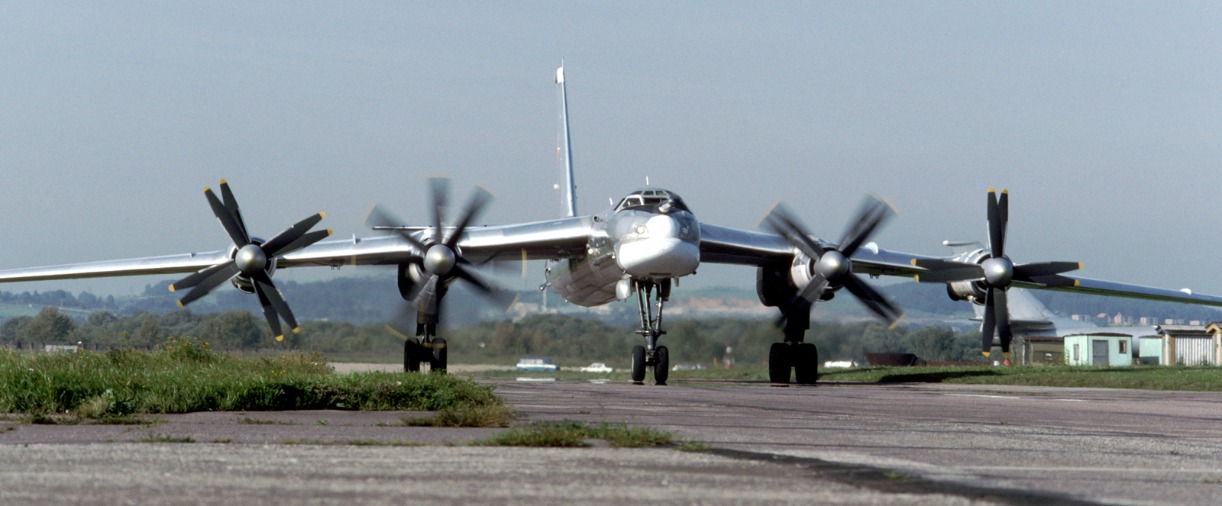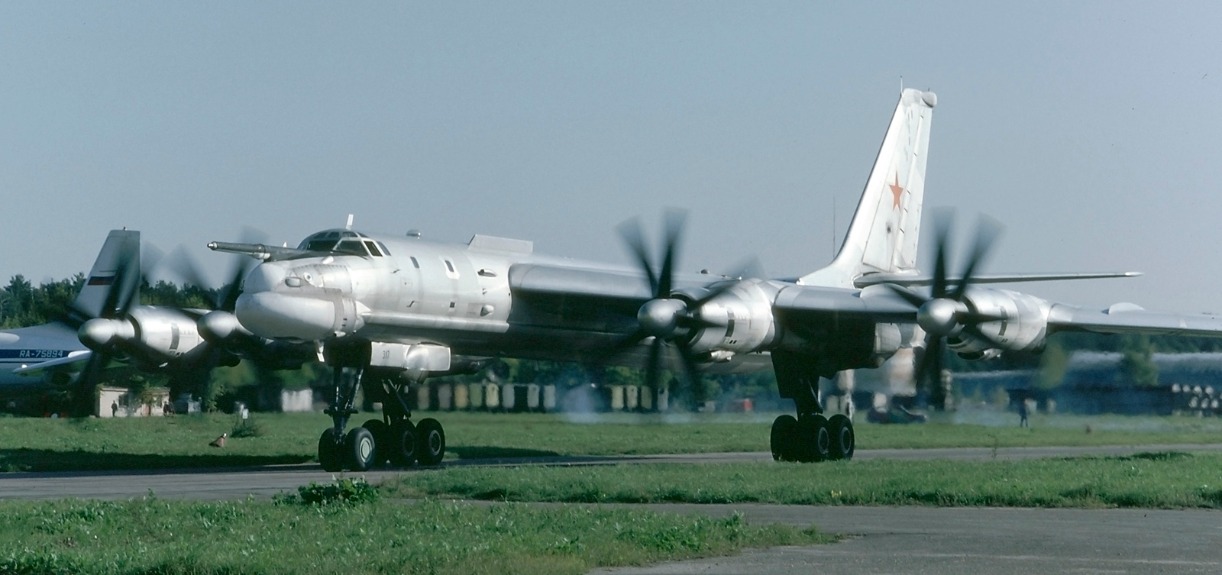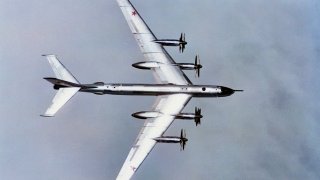Tu-95 Bear: Russia's 'Forever Bomber' Just Won't Retire
The Russian Tupolev Tu-95 "Bear" bomber, with its turbo-prop engines, has been a cornerstone of Soviet and Russian air power since its introduction in 1956. Designed for long-range missions, it boasts an operating range exceeding 8,000 miles.
Summary and Key Points: The Russian Tupolev Tu-95 "Bear" bomber, with its turbo-prop engines, has been a cornerstone of Soviet and Russian air power since its introduction in 1956. Designed for long-range missions, it boasts an operating range exceeding 8,000 miles.

-Despite its age, the Tu-95 remains relevant, capable of carrying nuclear cruise missiles and serving as an electronic surveillance platform. It continues to patrol near American and European borders, including recent activities near Alaska and Ukraine.
-With an expected service life extending to 2040, the Tu-95 is a testament to enduring Soviet engineering, remaining a versatile and strategic asset for Russia.
The Tu-95 'Bear': Russia’s Long-Range Missile Truck
Russia’s Tupolev Tu-95 “Bear” bomber may not look like much. In fact, its turbo-prop engines are an early Cold War-harkening anachronism. But the aging Tu-95 is commonly understood to be the most capable bomber the Soviet Union ever produced.
Designing the Bear
While the turbo-prop engines look more like something you’d find on a regional puddle-jumper, rather than a great power’s nuclear bomber, the old-school engines served a very specific purpose. Of course Soviet designers could have installed turbojet engines on their Tu-95 – but the Soviets wanted a jet that could strike deep into enemy territory, with a minimum range of 6,200 miles. The turbo-prop engine enables such a vast operating range. Once installed, the Tu-95’s turbo-prop engines permitted an operating range in excess of 8,000 miles, meaning the Soviet bomber could fly back and forth across the continental U.S. about three times without needing to refuel.
The Tu-95 entered the Soviet air force in 1956, and it continues to serve today, almost 70 years later. This forces comparisons to the long-serving B-52 Stratofortress, an American bomber of similar vintage. The Tu-95, like the B-52, is still relevant. It even saw action in 2015 against ISIS, and it is expected to remain in service until at least 2040, meaning the airframe could hit the 100-year-in-service mark.
Although the Tu-95 was built as a bomber, the airframe has often been used as an electronic surveillance platform, adding value for cash-strapped Soviet/Russian forces hoping to get as much versatility as possible out of their fleet.

Of course, the Tu-95 is also outfitted as a proper bomber. The K variant can deploy the Russian Kh-20 nuclear cruise missile, meaning the Tu-95 has both the range and ability to deliver nuclear ordnance to American soil, assuming the non-stealth airframe could penetrate American air defenses.
To be clear, the Tu-95 could not penetrate American air defense systems, nor indeed any modern air defense system, and it would not survive against modern interceptor aircraft. The Tu-95 is a 70-year-old platform, after all, and no match for 21st-century systems.
“But that’s where the ability to fire cruise missiles plays such a vital role,” Brandon J. Weichert wrote. “[The Tu-95 is] basically long-range missile trucks that can engage enemies at a distance, negating the efficacy of air defenses and the threat of intercepts.”
Tu-95: Still Flying Today
The Tu-95 has routinely pestered American and European forces, slinking up to borders and patrolling overlapping areas of interest. The Tu-95 often loiters around the Alaskan coastline, not far from Russia’s easternmost borders. In 2014, a Tu-95 flew to within 50 miles of California’s coastline, forcing the U.S. Air Force to initiate a proper intercept.
The Tu-95 is also active in Ukraine, fitting in nicely alongside the rest of the Russian equipment – much of which is terribly outdated, yet still capable of performing adequately enough. Expect the 55 still-flying Tu-95s to remain in service for as long as Russian mechanics can keep the bombers airworthy.
About the Author: Harrison Kass
Harrison Kass is a defense and national security writer with over 1,000 total pieces on issues involving global affairs. An attorney, pilot, guitarist, and minor pro hockey player, Harrison joined the US Air Force as a Pilot Trainee but was medically discharged. Harrison holds a BA from Lake Forest College, a JD from the University of Oregon, and an MA from New York University. Harrison listens to Dokken.
All images are Creative Commons and/or Shutterstock.


